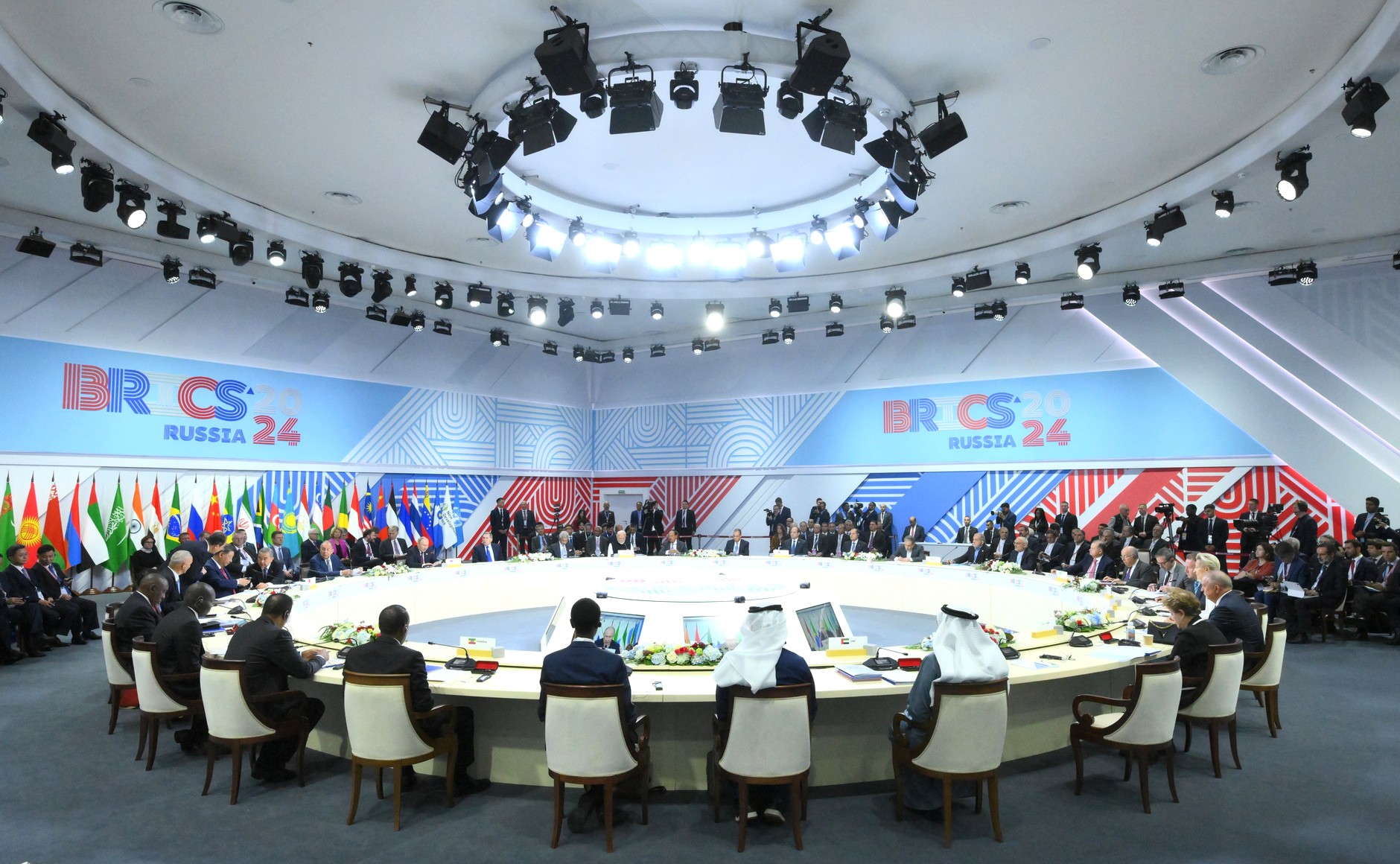Last month, the BRICS countries held their 16th summit in the Russian city of Kazan, this time featuring an expanding membership. Among the discussions, Russia repeatedly made calls to further develop an alternative international payment system. In its joint declaration at the end of the summit, BRICS members encouraged the “strengthening of correspondent banking networks within BRICS and enabling settlements in local currencies in line with BRICS Cross-Border Payments Initiative (BCBPI).”
This initiative, also known as BRICS Pay, is a planned decentralised and independent payment messaging mechanism system for BRICS nations to trade with each other through their own currencies.
BRICS Pay was first proposed in 2018, as a way for the developing nations to better trade with each other. However, it was during the summit in 2022 that BRICS Pay became seen as a possibility to bypass the SWIFT network, the internationally recognised standard of global bank transactions and one of the main pillars of Western sanctions against Russia. Since its invasion of Ukraine, the resulting sanctions have made it difficult for Russia to trade with its allies, as it is barred from using SWIFT or the US dollar. This has resulted in Russia having to use local currencies to trade, and at some points even bartering with fruits and vegetables.
So, Russia is understandably keen to avoid SWIFT, and as a founding member has been the strongest proponent of BRICS Pay. But other members are deeply interested as well. They see BRICS Pay as a channel to one day achieve a goal of de-dollarisation, to free themselves from America’s financial hegemony. Brazil is all for the project, for example, with President Lula da Silva stating that it is time for a new payment system between BRICS nations as “we need to work so that the multipolar order we aim for is reflected in the international financial system.” In 2023, he even suggested a BRICS currency.

BRICS is well suited for such a new banking network. Not only do they have a strong motive for creating the network, avoiding Western sanctions, but they already have the infrastructure necessary to build it. Russia’s Mir network, India’s Unified Payment Interface, and China’s WePay and AliPay, serve as strong foundations to create BRICS Pay. The plan for BRICS Pay is that it would use the technology of UPI and WePay, including digital wallets, QR code payments, and a framework that would directly link to local banks. This would enable countries to trade in their own currency, avoiding the dollar.
There is also a strong possibility that it would use blockchain technology, using digital ledgers to create transparency and “ensure efficient payment systems.” This in turn could give a boost to BRICS member’s digital currency, such as the e-Yuan or the e-Rupee. The intention to use “advanced technology” would help differentiate BRICS pay from SWIFT, which only uses messaging software.
The developing nations of BRICS, particularly those that still heavily trade with Russia, are keen to break away from the Western led financial order, but they still have a long way to go.
If BRICS Pay becomes feasible, it could develop into a strong tool against the Western-led financial order. BRICS membership of Brazil, Russia, India, China, South Africa, Egypt, Ethiopia, Iran, and the United Arab Emirates currently represents 35.4% of the world economy and around 45% of the global population. Enabling BRICS nations to better trade in their own currencies, it would weaken the domination of the US dollar.
Although Russia is the most enthusiastic about this project, the other founding members of BRICS are still wary of such a system. India is one, with Prime Minister Narendra Modi wanting to focus on the spread of India’s own UPI across BRICS nations. China is similarly unsure on the idea, as President Xi Jinping’s remarked that BRICS should “promote the international financial system to better reflect changes in the world economic landscape.” Both China and India have their alternative to SWIFT – the Cross-Border Interbank Payment System (CIPS) and the Structured Financial Messaging System (SFMS) respectively.
As for now, BRICS Pay, much like many other BRICS proposals, is still ultimately just an idea. Officially, Russian President Vladimir Putin has said BRICS “have not built and are not” building a payment system beyond feasibility studies. However, it is an idea that has spooked the Western world. The IMF chief has called for more information from BRICS. Just after the BRICS summit, the Bank for International Settlements left the mBridge digital currency project, which aims to support cross border payments and transactions through digital currencies, handling it to the central banks of China, Hong Kong, Saudi Arabia, Thailand and the UAE.
The developing nations of BRICS, particularly those that still heavily trade with Russia, are keen to break away from the Western led financial order, but they still have a long way to go. The US dollar is still used in 80% of global trade settlements, and SWIFT handles $US150 trillion in transactions every year. BRICS members seem aware the surmountable difficulties in disrupting that order. The joint statement was lowkey and did not call out BRICS Pay by name, preferring the softer sounding “BRICS Cross-Border Payments Initiative”. However, if BRICS Pay can become a reality, it will reshape the global financial system, giving the BRICS bloc a powerful advantage.

